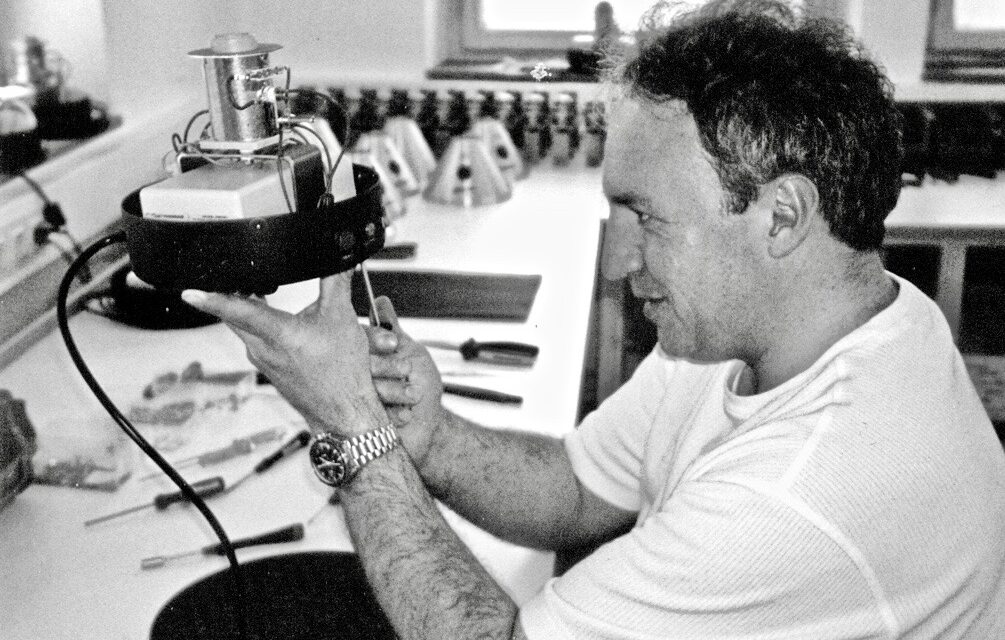By Dale Gieringer in O’Shaughnessy’s Summer 2003
Patients receiving physician approval to use cannabis should be warned that chemicals released when the dried leaves and/or flowers are burned put heavy smokers at increased risk for bronchitis and respiratory infections.
The risk can be avoided, however, by an alternative delivery system: a device called a vaporizer that heats dried cannabis to a temperature where cannabinoid vapors are released, but below the point of combustion, where noxious and carcinogenic smoke toxins are formed. Patients can thus inhale the pharmaceutically active cannabinoids without exposing themselves to harmful respiratory toxins.
Although the principle of vaporization has been known for a long time, until recently there were no scientific studies demonstrating its feasibility. The situation has changed thanks to a pair of studies sponsored by California NORML and MAPS at Chemic Laboratories in Canton, Mass.
The first, completed in 2001, tested a vaporizer known as the M-1 Volatizer, (www.volatizer.com). The M-1 resembles an auto cigarette lighter that is designed to fit over a pipe or bong bowl and heat the sample to the point of vaporization. Efficient vaporization occurs around 180° – 190° C (356° – 374° F) while combustion occurs around 230° C (446° F).
The study found that the M-1 delivered effective levels of THC, CBD and CBN, while completely eliminating three specific toxins —naphthalene, benzene, and toluene— in the solid phase of the vapor. A qualitative reduction in carbon monoxide was also detected.2
Volcano Study
The second vaporizer study, released in April of this year, looked at a much wider range of toxins, focusing particularly on the highly carcinogenic polynuclear aromatic hydrocarbons (PAHs), a prime suspect in smoking-related cancers. The device tested was the “Volcano” (www.storz-bickel.com), a vaporizer that has become extremely popular with medicinal cannabis users who can afford it —the retail price is around $600 due to its high-tech innovative design.
The Volcano consists of a heater with a sample chamber on top. An air pump blows hot air through the sample into a balloon, where the vapors are collected. After being filled. the balloon is detached and fitted with a valved mouthpiece, through which the vapors are inhaled. The novel design has been patented in the U.S. and internationally by Storz & Bickel GmbH&Co. KG, Tuttlingen, Germany.
The study compared Volcano vapors to smoke produced by combusted marijuana. The cannabis was the standard product provided to researchers by the National Institute on Drug Abuse, containing 4% THC. Analysis by gas chromatograph mass spectrometer (GCMS) showed that the Volcano vapor consisted almost entirely of THC (95%), with traces of cannabinol (CBN), another cannabinoid. The remaining 5% consisted of small amounts of caryophyllene, a fragrant oil in cannabis and other plants, and two other components of uncertain origin.
In contrast, analysis of the combusted smoke showed a potpourri of at least 111 different gas phase components, including six known PAHs. Non-cannabinoids accounted for as much as 88% of the total gas content of the smoke. 3
A separate study was undertaken to determine the efficiency of the Volcano in delivering THC. Three balloonfuls of vapor were drawn from the sample and analyzed quantitatively via high-pressure liquid chromatography. On average, 46% of the THC from the sample appeared in the vapor. This compares favorably with the efficiency of marijuana cigarettes as observed in other studies, which can fall below 25% due to loss of THC in sidestream smoke.
The efficiency of the Volcano appears to be due to the innovative balloon containment system, which prevents loss of vapor as well as providing a fixed dosage quantity useful for controlled studies. It is possible that higher efficiencies could have been realized by stirring the sample around and drawing another balloonful, as recommended by the manufacturer.
The Volcano study provides the most compelling evidence to date that vaporizers offer an effective means of eliminating the respiratory hazards of marijuana smoking. In its 1999 report on medical marijuana, the Institute of Medicine recommended against long-term use of smoked marijuana because of the health risks of smoking. However, the IOM report was silent on the subject of vaporizers.
Foes of medical marijuana such as the California Narcotics Officers Association have continued to harp on the health hazards of smoking as an objection to legalization. However, advocates can now reply that the vaporizer studies put these objections to rest.
At present, the only FDA-approved method for administering marijuana to human research subjects is via smoking NIDA-supplied cigarettes. NORML and MAPS are supporting efforts to have vaporizers approved by the FDA. Donald Abrams, MD, of the University of California, San Francisco, has submitted a grant proposal to the California Center for Medical Cannabis Research in San Diego to test the Volcano in human subjects. If the protocol is funded and the Volcano approved by the FDA for human research, it will be the first human study using a vaporizer.
In the meantime, vaporizers are enjoying growing popularity in the medical marijuana community. Dozens of models are currently on the market, ranging from homemade glass vaporization pipes to sophisticated electronic devices. To avoid the paraphernalia laws, most are discreetly sold as “herbal vaporizers.”





